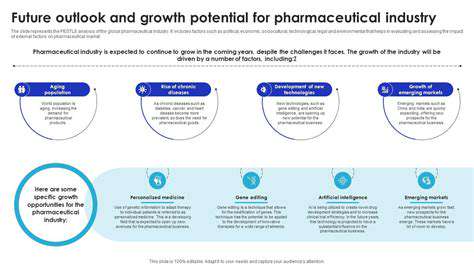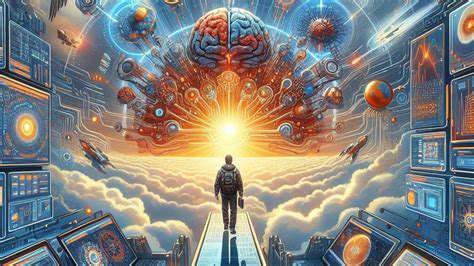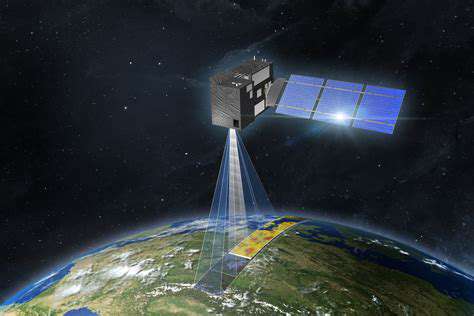Technological Advancements and Innovations
Fuel Cell Technology: Powering the Future
Fuel cell technology is crucial to the advancement of hydrogen-powered aircraft. These electrochemical devices convert hydrogen and oxygen directly into electricity, eliminating the need for combustion and producing only water vapor as a byproduct. Significant advancements in fuel cell design, particularly in materials science and catalyst development, are paving the way for higher efficiency, longer lifespans, and improved performance under various operating conditions. This translates directly to more sustainable and powerful aircraft propulsion systems.
Furthermore, the development of solid oxide fuel cells (SOFCs) offers the potential for higher operating temperatures, leading to greater energy conversion efficiencies. Research into these technologies is ongoing, aiming to overcome challenges like cost-effectiveness and durability, making hydrogen-powered aircraft a realistic possibility in the near future.
Hydrogen Storage Solutions: A Critical Component
Storing hydrogen efficiently and safely is a significant hurdle in the development of hydrogen-powered aircraft. Current methods, including cryogenic storage and compressed hydrogen tanks, have limitations in terms of weight and volume. Innovative approaches, like metal hydrides, which absorb hydrogen within their structure, or liquid hydrogen storage with advanced insulation, are being explored to enhance storage density and reduce the overall weight of the aircraft.
The quest for lighter and more compact hydrogen storage systems is critical for enabling the practical application of hydrogen-powered aircraft. Research is focused on materials that can effectively absorb hydrogen without compromising structural integrity and safety. Continued breakthroughs in this area will be paramount for the widespread adoption of hydrogen-powered flight.
Aircraft Design Considerations: Integrating Hydrogen Propulsion
The design of aircraft needs to be fundamentally altered to accommodate hydrogen propulsion systems. This includes modifications to the fuselage, wings, and engine nacelles to optimize hydrogen storage, fuel cell placement, and overall aircraft aerodynamics. Integrating these new technologies requires careful engineering considerations to ensure structural integrity, safety, and performance. Designing aircraft specifically for hydrogen fuel cells is a complex process that requires collaboration between aerospace engineers, materials scientists, and fuel cell experts.
Environmental Impact and Sustainability: A Zero-Emission Future
The primary environmental advantage of hydrogen-powered aircraft is their zero-emission nature. Replacing traditional fossil fuel-based engines with hydrogen fuel cells dramatically reduces greenhouse gas emissions and mitigates air pollution. This transition is essential for achieving sustainability in aviation and addressing the global concern of climate change. The potential for a truly clean and sustainable future for air travel is a driving force behind the significant research and development efforts in this field.
The shift towards hydrogen-powered aviation represents a crucial step towards achieving a greener future for air travel. Reduced reliance on fossil fuels translates to a significant decrease in carbon emissions, contributing to a healthier environment for future generations.
Safety and Infrastructure Development: Ensuring Reliable Operation
Ensuring the safe and reliable operation of hydrogen-powered aircraft requires addressing critical safety concerns related to hydrogen storage, handling, and usage. Developing robust safety protocols and infrastructure, including hydrogen refueling stations and maintenance procedures, is essential to minimize risks. The safe and efficient handling of hydrogen requires a comprehensive safety framework that addresses potential hazards and ensures a high level of operational safety.
The development of dedicated hydrogen refueling stations will be critical to support the expansion of hydrogen-powered air travel. This infrastructure will need to be strategically placed and designed to ensure prompt and safe refueling capabilities for future aircraft, thus encouraging widespread adoption and reducing the logistical challenges of hydrogen-based aviation.
The Future Outlook and Potential Impact

The Rise of AI in Various Industries
Artificial intelligence (AI) is rapidly transforming numerous sectors, from healthcare and finance to manufacturing and transportation. AI-powered tools are automating tasks, improving efficiency, and enabling more precise decision-making in these industries. This automation is predicted to significantly impact the job market, creating new roles while potentially displacing others. The integration of AI is not just about streamlining processes; it's also about unlocking previously unimaginable opportunities for innovation and growth.
From diagnosing medical conditions to analyzing financial trends, AI is already making a profound impact. Its ability to process vast amounts of data and identify patterns allows for more accurate predictions and faster responses. As AI systems continue to evolve, their capabilities will only expand, leading to further advancements across a wide range of industries.
Technological Advancements Driving Progress
Ongoing advancements in machine learning, deep learning, and natural language processing are accelerating the pace of AI development. These innovations are enabling AI systems to handle increasingly complex tasks and learn from data more effectively. This progress is crucial for unlocking the full potential of AI and addressing the challenges it presents.
The development of specialized hardware, like GPUs, further accelerates AI processing. The faster and more efficient processing capabilities of this hardware are critical for enabling real-time applications and sophisticated AI models. These advancements are creating a virtuous cycle, where better algorithms lead to faster hardware, and faster hardware enables even more advanced algorithms.
Potential Impact on the Global Economy
The widespread adoption of AI has the potential to reshape the global economy. Increased productivity and efficiency could lead to significant economic growth, but the shift might also create new challenges related to job displacement. The implications for various economic sectors, including manufacturing, services, and agriculture, are profound and will require careful consideration and proactive strategies for adaptation.
The emergence of new industries and business models, driven by AI, will be a key factor in shaping the economic landscape. This will require a skilled workforce capable of operating and maintaining AI systems, as well as developing new solutions. The potential for economic disparity will need careful management as the benefits of AI are distributed across populations and regions.
Ethical Considerations and Responsible AI Development
As AI systems become more sophisticated, ethical considerations become increasingly important. Bias in algorithms, data privacy concerns, and the potential for misuse of AI systems require careful attention. Promoting responsible AI development is crucial to ensure that this technology is used for the benefit of humanity and not for harmful purposes.
Robust regulations and ethical guidelines are needed to ensure that AI systems are developed and deployed responsibly. This includes establishing clear standards for data privacy, algorithmic fairness, and accountability. Open dialogues between policymakers, researchers, and the public are essential to navigate the ethical challenges that accompany AI advancement.
Opportunities for Human-AI Collaboration
The future of work will likely involve significant human-AI collaboration. Instead of replacing humans, AI is more likely to augment their capabilities and allow them to focus on tasks requiring creativity, critical thinking, and complex problem-solving. This shift in the nature of work will require new skills and educational approaches.
Human expertise and creativity will remain essential elements in the AI-driven future. Collaboration between humans and AI systems can lead to breakthroughs in various fields, from scientific discovery to artistic expression. By leveraging the strengths of both, we can create a more innovative and productive future.











